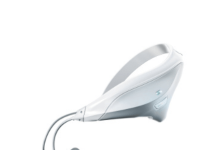LumiThera has released new topline data for its Valeda Light Delivery System treatment for slowing the progression of dry age-related macular degeneration (AMD).
LumiThera’s Valeda became the first non-invasive approach for treating dry AMD following its authorisation by the US Food and Drug Administration (FDA) in November 2024.
The US-based company’s device uses an approach called photobiomodulation to stimulate retinal cells to improve cellular function in patients with dry AMD to delay the worsening of the condition.
Related: Inquis’ thrombectomy system meets primary endpoints in PE treatment trial
The LIGHTSITE IIIB study [NCT06229665] enrolled 75 subjects with dry AMD across seven US sites. Results of the trial were shared during the Association for Research in Vision and Ophthalmology (ARVO) 2025 meeting, taking place in Salt Lake City between 4-8 May.
All subjects were treated with the Valeda Light Delivery System for a total of nine treatments over a three-week to five-week period. A re-treatment period will begin at the four-month point to include nine additional treatment visits, to be repeated at eight months and 12 months, per the study’s listing on Clinicaltrials.gov.
The open-label, prospective, multi-centre extension study on the continued use of photobiomodulation in subjects with dry AMD who initially participated in the LIGHTSITE III pivotal study, demonstrated an improvement in best corrected visual acuity (BCVA) for 24 months of >5 letters or ‘one line’ of improvement on an eye chart.
Quan Dong Nguyen, study co-investigator and professor at the Byers Eye Institute at Stanford University, noted that while the size of the study population of LIGHTSITE IIIB was relatively small, after 13 months, more than 60% of subjects who received Valeda treatment in both studies were still showing a benefit in vision of ‘over one line’ [on an eyechart].
“What is exciting is this is the first and only FDA-authorised treatment that can improve vision with extended benefits out to 4.5 years, suggesting that earlier and extended treatment provides the best outcomes,” Nguyen said.
The most common form of AMD, dry AMD causes the macula, the central part of the retina, to gradually break down, eventually resulting in vision loss. It is the leading cause of visual loss and impairment in patients aged 60 and above across Europe and North America.






